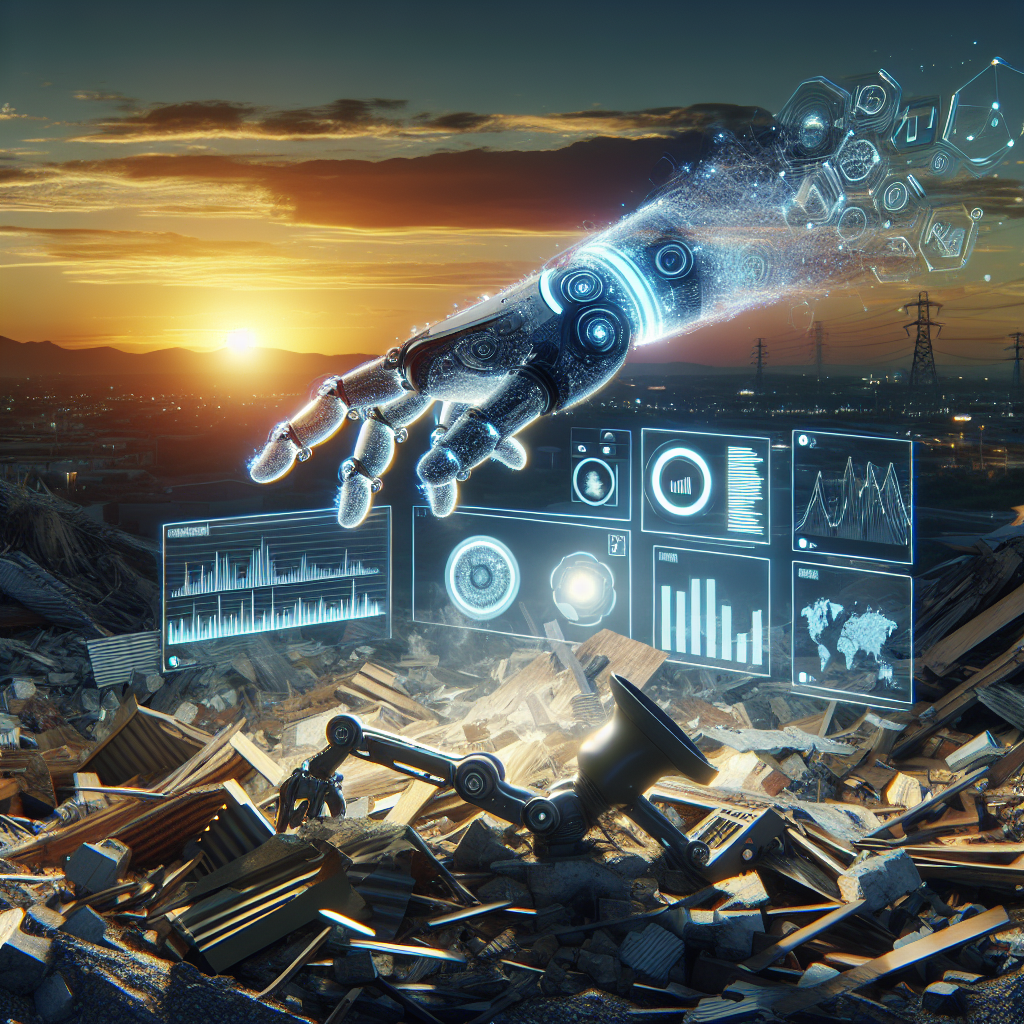In recent years, natural disasters have become increasingly common and devastating, causing immense destruction and loss of life. From hurricanes and earthquakes to wildfires and floods, communities around the world are facing the challenge of rebuilding and recovering from these catastrophic events. In the aftermath of a disaster, time is of the essence, and every minute counts in the effort to save lives, restore infrastructure, and provide aid to those in need.
One of the most promising technologies that have emerged in recent years to aid in disaster recovery and rebuilding efforts is artificial intelligence (AI). AI tools have the potential to revolutionize the way we respond to and recover from disasters, by providing real-time data analysis, predictive modeling, and decision-making support. Leveraging AI tools in disaster recovery efforts can help streamline operations, allocate resources more efficiently, and ultimately save lives.
There are several ways in which AI can be used to enhance disaster recovery and rebuilding efforts. One of the key applications of AI in disaster response is in the analysis of satellite imagery and other data sources to assess the extent of damage and prioritize response efforts. AI algorithms can quickly process large volumes of data to identify areas that have been most severely affected by a disaster, allowing responders to focus their efforts where they are most needed.
Another important application of AI in disaster recovery is in the field of predictive modeling. By analyzing historical data and using machine learning algorithms, AI tools can help predict the likelihood and severity of future disasters, allowing communities to better prepare and plan for potential emergencies. This can help reduce the impact of disasters and minimize the loss of life and property.
AI tools can also be used to optimize resource allocation during disaster recovery efforts. By analyzing data on population density, infrastructure, and other factors, AI algorithms can help identify the areas that are most in need of assistance and allocate resources accordingly. This can help ensure that aid is delivered quickly and efficiently to those who need it most.
In addition to these applications, AI can also be used to enhance communication and coordination among responders during a disaster. By analyzing real-time data from social media, news sources, and other channels, AI tools can help identify emerging trends and prioritize response efforts accordingly. This can help ensure that responders are able to quickly adapt to changing conditions and make informed decisions in the midst of a crisis.
Overall, leveraging AI tools in disaster recovery and rebuilding efforts has the potential to greatly improve the effectiveness and efficiency of response efforts, ultimately saving lives and reducing the impact of disasters on communities around the world. By harnessing the power of AI, we can better prepare for and respond to disasters, ensuring that we are able to recover quickly and rebuild stronger in the face of adversity.
FAQs:
Q: How can AI help in disaster recovery efforts?
A: AI can help in disaster recovery efforts by analyzing data, predicting future disasters, optimizing resource allocation, and enhancing communication and coordination among responders.
Q: What are some examples of AI tools used in disaster recovery?
A: Some examples of AI tools used in disaster recovery include satellite imagery analysis, predictive modeling algorithms, and real-time data analysis tools.
Q: How can communities benefit from leveraging AI in disaster recovery efforts?
A: Communities can benefit from leveraging AI in disaster recovery efforts by receiving aid more quickly and efficiently, reducing the impact of disasters, and ultimately saving lives.
Q: What are some challenges to implementing AI in disaster recovery efforts?
A: Some challenges to implementing AI in disaster recovery efforts include data privacy concerns, lack of access to technology in some areas, and the need for training and expertise in using AI tools.
Q: How can governments and organizations support the use of AI in disaster recovery efforts?
A: Governments and organizations can support the use of AI in disaster recovery efforts by investing in technology infrastructure, providing training and resources to responders, and promoting collaboration and information sharing among stakeholders.

